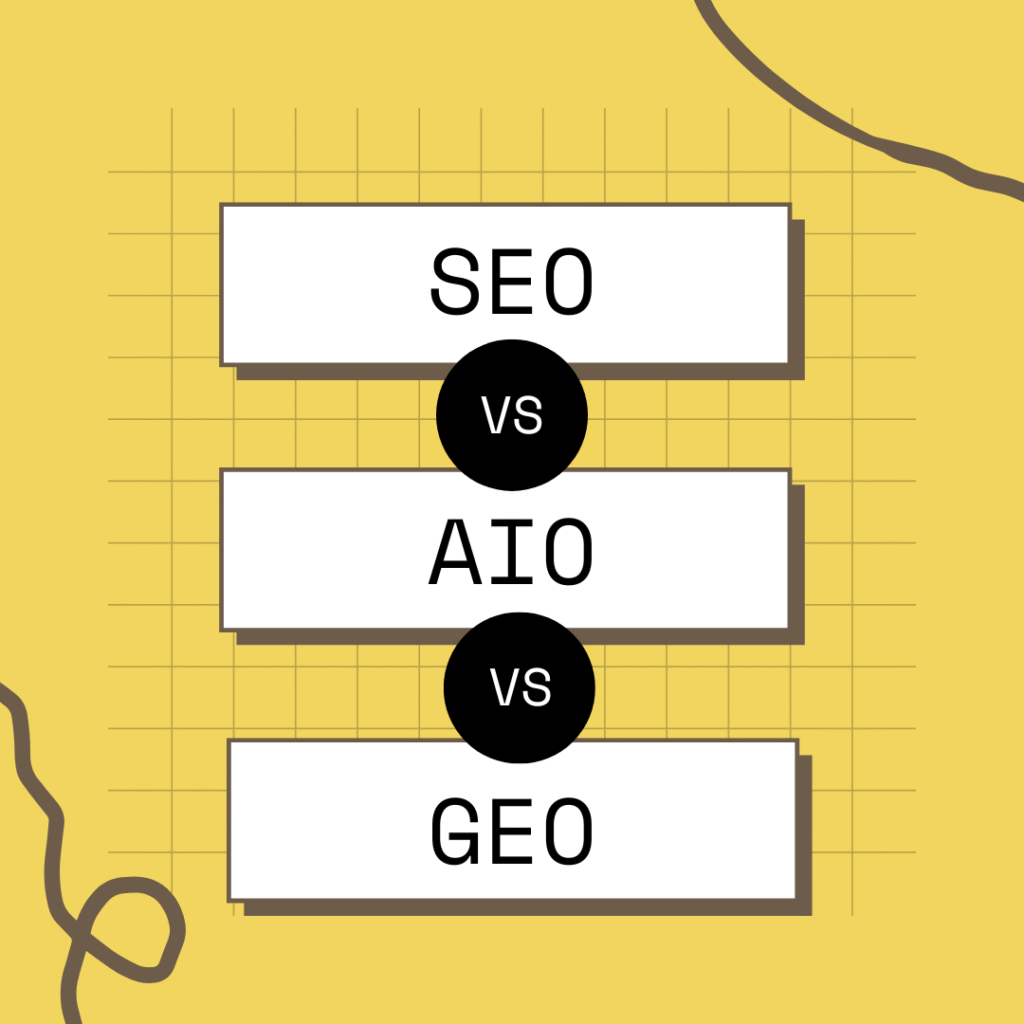

The Ancient DNA of SEO
Search Engine Optimization (SEO) is often viewed as a purely modern, technical discipline—a high-speed race to the top of Google’s search results pages. But to truly understand the new frontiers of SEO, like Generative Engine Optimization (GEO) and Artificial Intelligence Optimization (AIO), you have to look back at its roots.
The origins of SEO aren’t just a history lesson; they’re the foundational DNA that explains the priorities of today’s most advanced search algorithms.
Where It All Began: The Mid-1990s and The Simple Goal
The story of SEO begins in the mid-1990s, when the very first search engines like AltaVista, Lycos, and Yahoo! started cataloging the nascent World Wide Web.
The early goal of SEO was remarkably simple: get indexed and found.
The First SEO Sins
Because the early algorithms were basic, based almost entirely on on-page factors, optimization was primitive and, frankly, easily manipulated:
Keyword Stuffing: Webmasters would cram pages with keywords—sometimes invisible to users—just to trick the search engine into thinking the page was hyper-relevant.
Meta Tag Manipulation: Crucial page details were hidden in <meta> tags, which could be exploited with irrelevant keywords.
Directory Submission: Visibility relied heavily on manually submitting your site to web directories like Yahoo!
This early, black-hat era, where the focus was on crawlers, not users, created the first major tension in SEO: the conflict between a site owner’s desire to rank and a search engine’s mission to provide quality, relevant answers to users.
The Google Era: A Paradigm Shift to Quality and Authority
The true turning point, and the most crucial event for modern SEO, was the arrival of Google in 1998. The co-founders, Larry Page and Sergey Brin, introduced a revolutionary ranking factor called PageRank.
The Birth of Off-Page SEO
PageRank fundamentally changed the game by introducing the concept of authority through backlinks. It worked on the principle that a link from one website to another was essentially a “vote of confidence.”
The Core Principle: Ranking was no longer just about what you said (on-page keywords) but who vouched for you (off-page backlinks).
The Goal: The search engine’s focus shifted from a simple keyword match to relevance + authority.
This shift forced the industry to evolve, leading to years of algorithm updates (like Panda, Penguin, and Hummingbird) that continually cracked down on manipulation and pushed webmasters towards one clear mandate: Focus on the User Experience and Deliver Genuine Value.
The Modern Manifestation: SEO’s Core Principles in GEO and AIO
Today’s cutting-edge strategies, GEO and AIO, are not a revolution against traditional SEO; they are its logical evolution into the age of artificial intelligence.
GEO (Generative Engine Optimization) and AIO (Artificial Intelligence Optimization) both exist to help content thrive in environments like Google’s AI Overviews, Perplexity, and other generative AI search platforms.
Here’s what the origins of SEO mean for this new landscape:
The Enduring Importance of Authority (PageRank’s Legacy)
Just as early Google looked for authoritative votes (backlinks), AI-driven search engines now look for source trustworthiness.
In GEO/AIO: Generative AI models are trained to prioritize content from sources that demonstrate E-E-A-T (Experience, Expertise, Authoritativeness, and Trustworthiness). They won’t cite content from a spammy, no-name site. The original principle of building credibility to rank is now the principle of building credibility to be cited.
Clarity and Structure Over Stuffing (The Anti-Manipulation Ethos)
The battle against keyword stuffing taught search engines that content must be clearly structured and semantically rich to be truly understood.
In GEO/AIO: AI systems need highly structured data to pull out concise, quotable answers. This means a heavy focus on:
Direct Answers: Getting to the point immediately.
Schema Markup: Labeling data (like facts, reviews, and FAQs) so the machine can read it easily.
Hierarchical Headings: Using H1, H2, and H3s to segment a topic logically for machine comprehension.
User Intent as the Ultimate King (The Hummingbird/Panda Philosophy)
Google’s major quality updates (Panda, Penguin) were all about punishing low-quality, user-unfriendly content. The Hummingbird update fully shifted the focus from keywords to semantic search—the meaning and intent behind the user’s query.
In GEO/AIO: This principle is taken to the extreme. AI Overviews and chatbots are all about providing a single, perfect answer to a complex query. Your content must not only target a keyword but fully and comprehensively address the user’s underlying question in a conversational, human-like way.
The SEO Mantra Remains the Same
The language of SEO may have changed from “keyword density” to “citation frequency,” but the fundamental requirement—the enduring DNA passed down from the 1990s—is the same:
To succeed in any form of SEO (traditional, GEO, or AIO), you must create the most authoritative, clear, and valuable content on the web for the user.
The battleground has simply shifted from the traditional blue link to the AI-generated answer box. In this new era, those who honor the old core principles of quality and authority will be the ones that the generative engines choose to cite.


